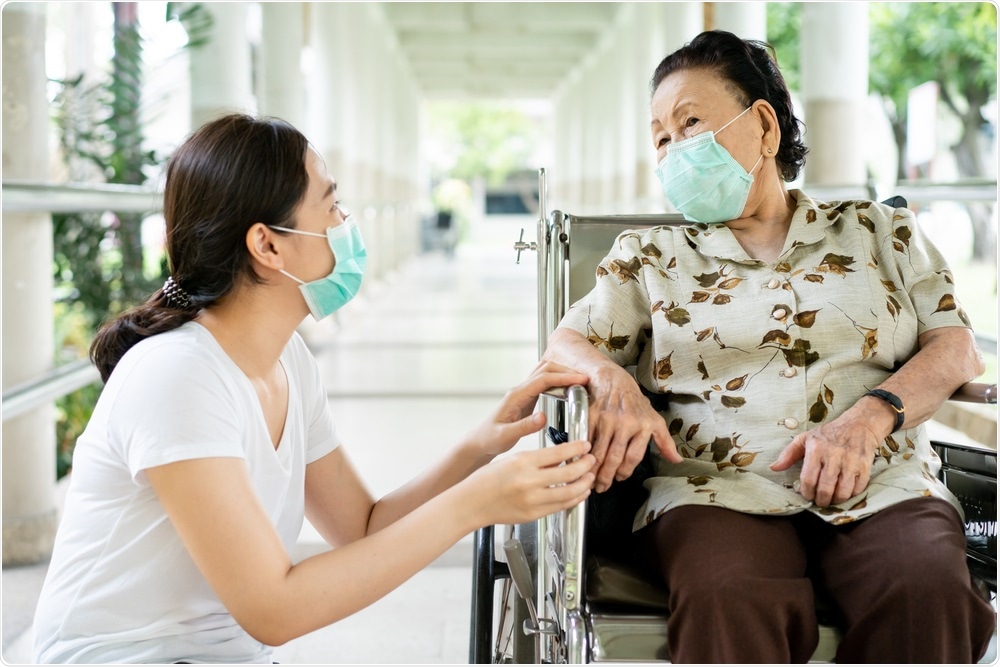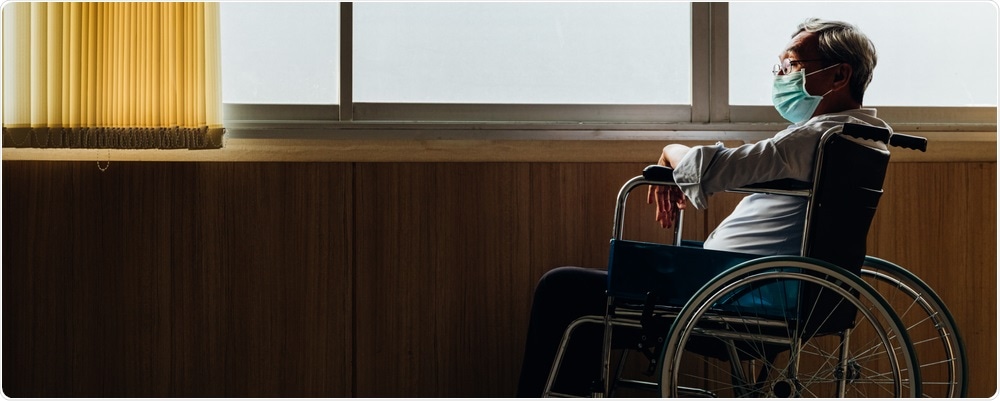Throughout much of the coronavirus disease (COVID-19) pandemic, nursing homes and care homes were often the most significantly affected, as many of these centers cater to vulnerable and high-risk individuals like the elderly.
Researchers from the University of Liverpool aimed to explore the impact of COVID-19, which is caused by infection of the severe acute respiratory syndrome coronavirus 2 (SARS-CoV-2), on the working practices of care home staff, particularly those caring for people with dementia.
The study, which appeared in the pre-print server medRxiv*, shows that the pandemic significantly disrupted the daily working practices of care home staff, with some forced to adopt additional roles on top of increased workloads. These roles were performed to compensate for the loss of external agencies and support.
 Study: Working in a care home during the COVID-19 pandemic: How has the pandemic changed working practices? Image Credit: DG Fotostock / Shutterstock.com
Study: Working in a care home during the COVID-19 pandemic: How has the pandemic changed working practices? Image Credit: DG Fotostock / Shutterstock.com

 This news article was a review of a preliminary scientific report that had not undergone peer-review at the time of publication. Since its initial publication, the scientific report has now been peer reviewed and accepted for publication in a Scientific Journal. Links to the preliminary and peer-reviewed reports are available in the Sources section at the bottom of this article. View Sources
This news article was a review of a preliminary scientific report that had not undergone peer-review at the time of publication. Since its initial publication, the scientific report has now been peer reviewed and accepted for publication in a Scientific Journal. Links to the preliminary and peer-reviewed reports are available in the Sources section at the bottom of this article. View Sources
COVID-19 and care homes
The COVID-19 pandemic first started in December 2019 in Wuhan, China. From there, SARS-CoV-2 continued to spread to 192 countries and territories, infecting almost 179 million people worldwide and causing the deaths of almost 3.9 million people as of June 24, 2021.
During the pandemic, care homes experienced significant impacts including visitation restrictions and resident illnesses, with some facilities permanently closing as a result. By May 2020, care home residents accounted for 54% of all COVID-19-related deaths in the United Kingdom, with dementia and Alzheimer’s disease being the most common comorbidities.
Care homes in the U.K. consist of a healthcare team and multi-professional workforce, including nurses and care assistants. Unsurprisingly, the pandemic’s effects on care homes have been overwhelming, which prompted alterations to several staff roles. Aside from the impacts of the pandemic on workloads, nursing home care staff is also at a greater risk of contracting SARS-CoV-2, especially among those working across multiple care homes.
How has the pandemic changed care home working practices?
In the current study, the team aimed to determine the effect of the COVID-19 pandemic on the working practices of care homes.
To this end, the researchers gathered the responses from care home staff about their working practices before and since the pandemic. Between October and November 2020, the team collected data through interviews lasting between 16 and 41 minutes. The clinicians based their interviews on a topic guide developed with a team of clinicians and current or former caregivers.
The team described three central themes in the study, including the practical implications of working in a care home during the pandemic, staff values and changes to their roles, as well as the impact of care home staff and concerns for the care sector.
Practical implications of working in a care home
The study results showed that care homes were affected by new public health pandemic protection measures that included restricting visitors and imposing infection control measures. When restrictions were lifted, care homes were advised to adhere to local public health restrictions. Adapted visits were implemented, wherein window visits were possible if the residents resided on the ground floor.
The study participants noted that even if staffing levels were adequate, they were not always appropriately trained in supporting the new forms of visitation, such as those that utilized digital platforms.
Further, the staff members were mandated to comply with additional infection control measures, including the use of personal protective equipment (PPE) and increased cleaning procedures. These measures caused barriers to the working roles of staff members while also adding to their already growing workload.
The staff noted a lack of support and variation in the testing of staff and residents for SARS-CoV-2. Though testing improved over time, testing protocols varied between homes.
 Image Credit: Shutter.B / Shutterstock.com
Image Credit: Shutter.B / Shutterstock.com
Staff changes to their roles
During the pandemic, care home staff were left to fill roles that were originally given by external agencies and family caregivers. They stepped in to provide support to patients by engaging them in social interactions and activities. Staff members also became responsible for suggesting and implementing innovative ways to keep the residents entertained.
Also, the staff was expected to adopt greater emotional and familial roles since visitor restrictions were in place. The staff comforted the residents who were concerned that their family members had stopped visiting.
Impact to care home staff and concerns for the care sector
The care home staff experienced increased workloads, stress, and burnout due to the changes in their job roles and reported a lack of support after new policies were imposed. Most of the staff members reported higher levels of work-related stress and burnout, both of which were worsened by staff shortages that arose when other staff members were quarantined following a SARS-CoV-2 exposure.
Personal issues outside of work such as isolation in lockdown, family illness, and the loss of stress-relieving activities exacerbated their work-related stress.
“This research has identified drastic changes to care home staff roles during the pandemic. However, staff concerns expand beyond individual impacts of the pandemic, and consider the wider impact on the future of care homes.”
The study also highlights a gap in support and guidance that needs to be addressed. Nursing and other care home staff should be adequately trained to best adapt to their new working practices. These measures will help protect the staff’s health and ensure that care homes can recover from the pandemic.

 This news article was a review of a preliminary scientific report that had not undergone peer-review at the time of publication. Since its initial publication, the scientific report has now been peer reviewed and accepted for publication in a Scientific Journal. Links to the preliminary and peer-reviewed reports are available in the Sources section at the bottom of this article. View Sources
This news article was a review of a preliminary scientific report that had not undergone peer-review at the time of publication. Since its initial publication, the scientific report has now been peer reviewed and accepted for publication in a Scientific Journal. Links to the preliminary and peer-reviewed reports are available in the Sources section at the bottom of this article. View Sources
Source:
Journal references:
- Preliminary scientific report.
Hanna, K. , Giebel, C., Cannon, J., et al. (2021). Working in a care home during the COVID-19 pandemic: How has the pandemic changed working practices? medRxiv. doi:10.1101/2021.06.21258611. https://www.medrxiv.org/content/10.1101/2021.06.10.21258611v1.
- Peer reviewed and published scientific report.
Hanna, Kerry, Clarissa Giebel, Jacqueline Cannon, Justine Shenton, Stephen Mason, Hilary Tetlow, Paul Marlow, Manoj Rajagopal, and Mark Gabbay. 2022. “Working in a Care Home during the COVID-19 Pandemic: How Has the Pandemic Changed Working Practices? A Qualitative Study.” BMC Geriatrics 22 (1). https://doi.org/10.1186/s12877-022-02822-0. https://bmcgeriatr.biomedcentral.com/articles/10.1186/s12877-022-02822-0.